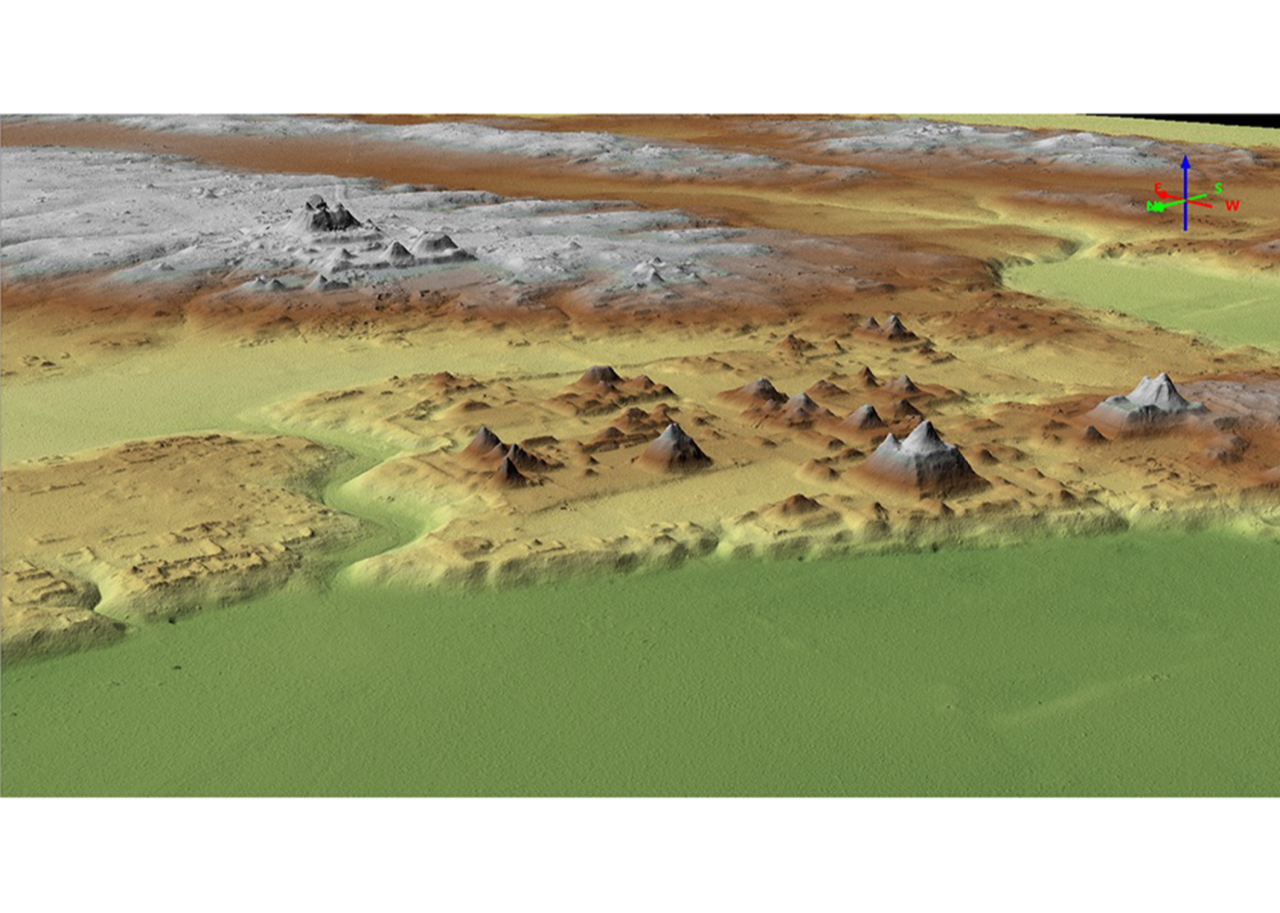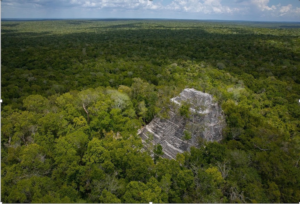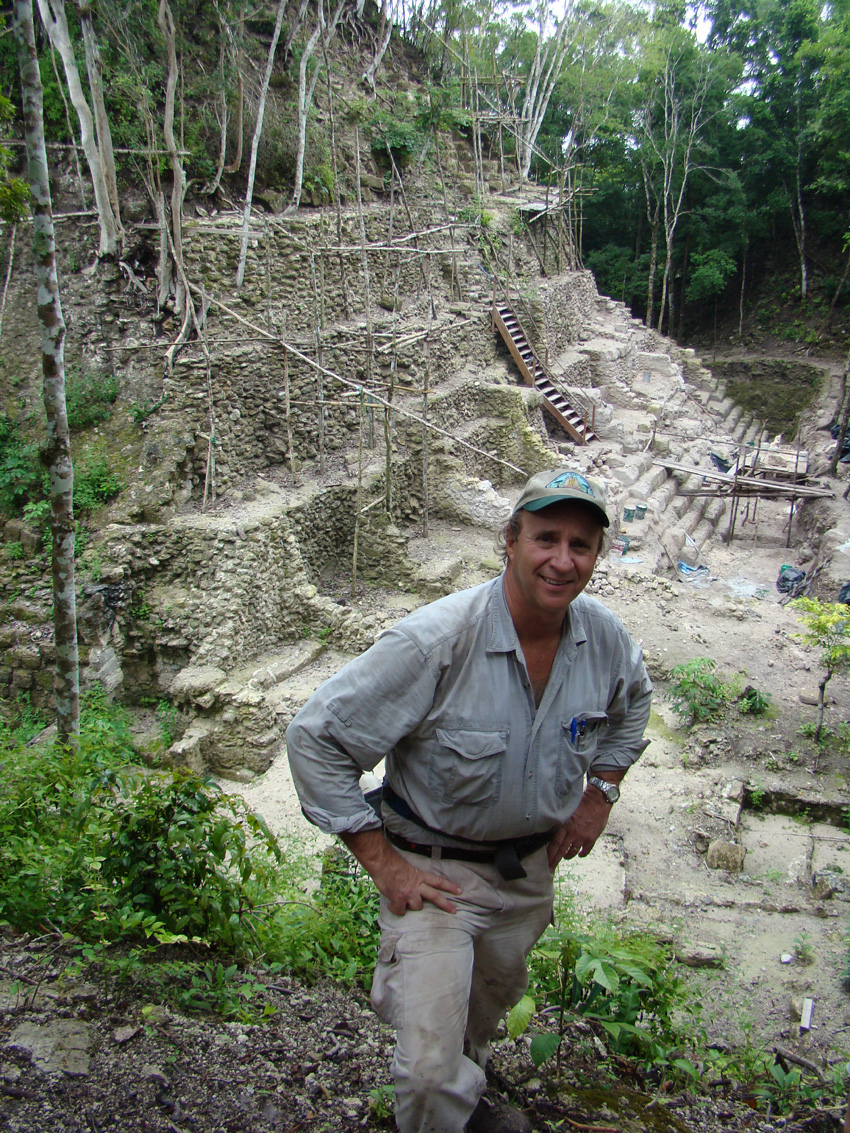Mayan Civilization in Northern Guatemala
An Extensive Civilization Revealed with Extraordinary LiDAR Technology
Richard Hansen
Director, Mirador Basin Project, Guatemala
Department of Anthropology
Idaho State University
Sponsored by PSW Science Member John Downing
About the Lecture

The Mirador-Calakmul Karst Basin is a natural and cultural wonder found in the extreme northern Peten rainforest of Guatemala and southern Campeche, Mexico. It contains a unique concentration of early and large ancient cities dating to the Middle and Late Preclassic periods (1000 B.C.- A.D. 150). It also contains the last area of intact rainforest left in Guatemala and southern Mexico. The sites are renowned, not only for their size and density, but also for the size of the structures – the pyramid of Danta at El Mirador is one of the largest ancient structures in the world.
Hundreds of ancient settlements, revealed with extraordinary LiDAR technology, are found within the geographical borders of the Basin, many of which are linked by a major ancient causeway network (the first “superhighway” system in the world), providing what appears to be one of the earliest incipient state level societies in the Western Hemisphere.
This unique combination of flora, fauna, and ancient cultural remains provides an unparalleled opportunity for conservation and development on a world class scale. However, as magnificent as the Mirador Basin is, it is under dire threat from logging, looting, narcotic trafficking, petroleum interests, poaching, and human trafficking. Much of the basin has been authorized for logging, supported by environmental organizations and foreign governmental institutions. The logging programs are viewed by some scholars as not sustainable due to the abundance of large swamps and the numbers of ancient cultural sites. The roads that are placed to extract logs provide avenues for uncontrolled cutting and burning of forest, and allow looting, poaching, and facilitate organized crime interests.
Conservation of the forests of the entire basin could be justified economically by the preservation and development of the world-class archaeological sites. Abundant data demonstrate that the controlled eco-tourism potential is a vastly superior economic opportunity for Guatemala than any other exploitation mechanism. A new model of conservation has been suggested to preserve the area as a Cultural and Natural Wilderness Sanctuary without roads or plane airstrips to neutralize organized crime. The use of LiDAR technology has provided the hope and the incentive that the sites will provide the strong economic justification that can allow preservation of the forest, conserve major archaeological sites, and provide critical economic resources in the impoverished communities that surround the basin, which will ultimately help establish a new cultural identity for Guatemala.

About the Speaker

Richard D. Hansen is Founder and President of the Foundation for Anthropological Research and Environmental Studies (FARES), Director of the Mirador Basin Project in Northern Guatemala and Affiliate Research Professor at Idaho State University. He is the founder of the Dialogue of Civilizations Conferences hosted by the National Geographic Society, with conferences in Guatemala, Turkey, China, India, and Egypt, and the Co-Founder of the Guatemala-China Association for Culture, Tourism and Sports based in Guatemala City.
Richard has been conducting archaeological research and scientific studies in northern Guatemala for more than 40 years. His research in the remote rainforests of northern Guatemala currently involves scholars from dozens of universities and research institutions from throughout the world. Hansen’s studies have identified some of the largest and earliest ancient cities in Central America, and his work has been an important contribution to the developmental history of Maya civilization. His work and conservation programs have been crucial in the conservation and protection of 810,000 acres of tropical forest in Guatemala.
Richard is an author on numerous publications on his work including 3 books (2 as series editor) and around 200 papers and book chapters in scientific and popular publications. He presents often on his work and has presented more than 400 professional papers and technical reports in scientific formats and symposia throughout the world. He has conducted and/or directed archaeological research in Israel, the US Great Basin, US Southwest, and Central America. As a project, his team has currently published 335 scientific papers, abstracts, and book chapters, and 1279 technical reports and scientific presentations, and his project has mapped and excavated in 56 ancient cities in the Mirador Basin.
His work has recently been featured in more than 36 film documentaries, including National Geographic Specials, the Learning Channel, the Discovery Channel, Discovery Channel 3Net, ABC’s 20/20, 60 Minutes Australia, ABC’s Good Morning America, ABC’s Primetime Live, CNN International Untold Stories, CNN Global Challenges, The History Channel, BBC of London, Russia 1 Television, Alstom Foundation Films, Timeline Films, WGBH Television, Storybook Productions of Germany, Guatevison, and TV Azteca. He also served as the principal consultant for Mel Gibson’s movie, Apocalypto, for CBS Survivor – Guatemala, and he participated with Morgan Freeman in National Geographic’s “The Story of God.”
Richard is the recipient of many honors and awards, including the following, to mention just a few. He was awarded the“Chevalier des Arts et des Lettres” of the “Ordre des Arts et Lettres” by the French Ministry of Culture, the Order of Quetzal-Gran Cruz, the highest civilian award in Guatemala, the National Order of the Cultural Patrimony of Guatemala, the “Orden de la Monja Blanca” the highest civilian award of the Ministry of Defense of Guatemala, the Orden del Pop” of Francisco Marroquin University in Guatemala and the Idaho State University Achievement Award. In addition, he was named “one of 24 individuals that changed Latin America” by Bravo Association Latin Trade Magazine, Environmentalist of the Year in Latin America by the Latin Trade Bravo Business Association, and he was the US Library of Congress Kislak Lecturer in 2012.
Richard earned a BS in Spanish and Archeology and an MS in Anthropology at Brigham Young University and a PhD in Archaeology at UCLA.
Minutes
On February 17, 2023, from the Powell Auditorium of the Cosmos Club in Washington, D.C, and by Zoom webinar broadcast on the PSW Science YouTube channel, President Larry Millstein called the 2,472nd meeting of the Society to order at 8:01 p.m. ET. He welcomed new members, and the recording secretary read the minutes of the previous meeting.
President Millstein then introduced the speaker for the evening, Richard Hansen, Director of the Mirador Basin Project at the Department of Anthropology at the Idaho State University. His lecture was titled, “Mayan Civilization in Northern Guatemala.”
Hansen began thanking his supporters, contributors, and colleagues. Hansen then discussed the Legacy of the Mirador-Calakmul Karst Basin and delved into the history of the Mayan civilization with a focus on the pre-classic period. Lidar technology, the speaker explains, has helped to reveal complex societies that were previously unknown. The area contains a large number of ancient cities, some of which were previously unknown.
Hansen then discussed his research on the biodiversity and archaeology of a specific area, the Mirador Basin, which contains six types of tropical forest and is home to ancient Maya civilization remains. The ceramics found in the area date back to 1000 BC and show intricate art and depictions of Mayan culture.
The speaker went on to talk about the discovery and preservation of pre-classic art and architecture of the Maya civilization which show the original colors and shapes of the buildings, elaborate water systems, and various depictions of the Mayan cosmos. The speaker explained that they leave the jungle on three sides of a pyramid for cost, maintenance, animal habitats, and future technology advancements.
Hansen then reviewed the deforestation carried out by the Mayans to build thicker floors in their buildings. He pointed out that the Maya had the same virtues and vices as us and that their civilization collapsed due to environmental degradation caused by their activities. The speaker then explained how Lidar technology was used to reveal the concentration and density of large, early cities in the area, and how these cities are worth saving due to their size and significance.
Hansen moved on to review the situation in northern Guatemala, where there is massive deforestation, logging, burning, and the intrusion of looters, poachers, and traffickers. He explains that this leads to the fragmentation of the forest, which could destroy the species that make it work.
Hansen concluded by emphasizing the importance of preserving the ancient Maya civilization in El Mirador and how to do so sustainably. He described how the area can be made accessible through a miniature train, which would allow for income to be generated through the concession model, instead of logging. The speaker explains that the ancient Maya civilization was likely much larger than previously thought, with millions of inhabitants. They also speculate that the civilization may have been conquered by the Olmec civilization.
One of the members asked about the population and construction of the ancient Maya civilization. The speaker responded noting that it took 15 million man days of labor to build Dante Pyramid. Another member asked about getting to the sites as a tourist. The speaker commented that there is either a full guide, or approach via a helicopter, however there is no direct ground transportation.
After the question and answer period, President Millstein thanked the speaker, made the usual housekeeping announcements, and invited guests to join the Society. President Millstein adjourned the meeting at 9:54 p.m.
Temperature in Washington, D.C.: 2° C
Weather: Partly Cloudy
Attendance: Attending in person: 78, and the number of online viewers in the first two weeks of posting was, 239.
Respectfully submitted,
Cameo Lance, Recording Secretary